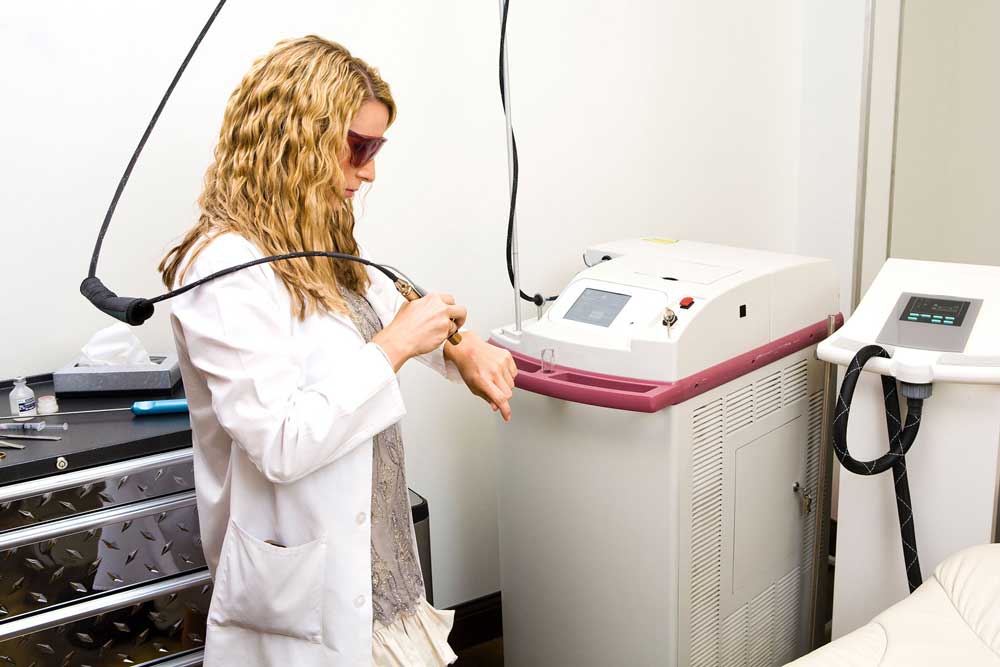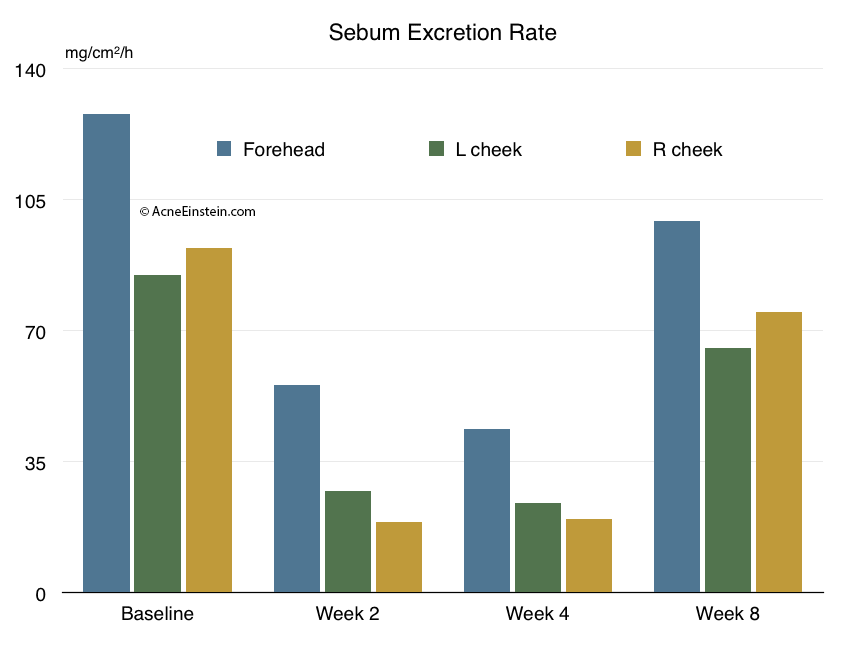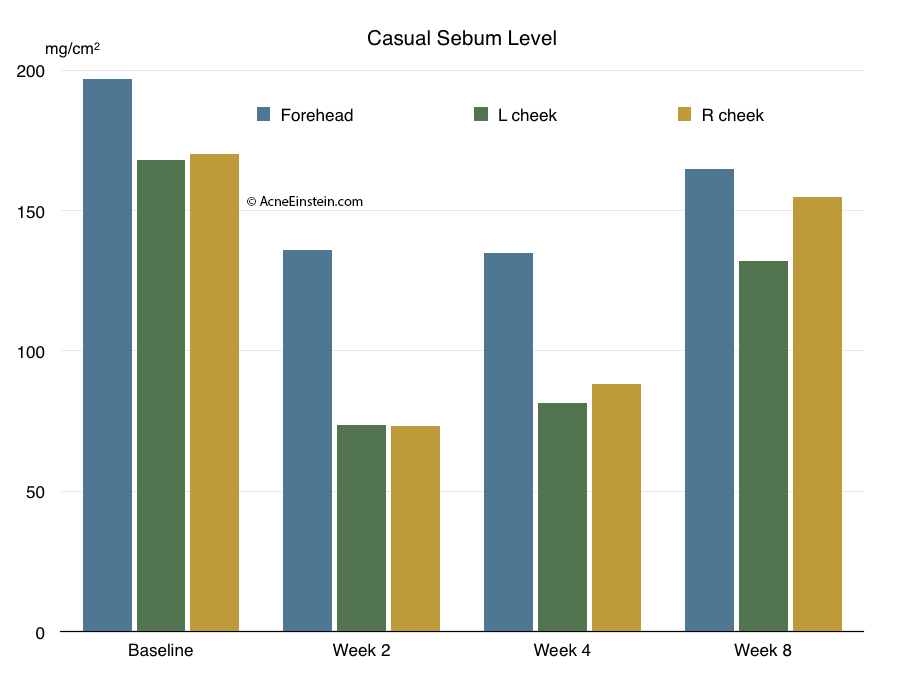Today I want to share with you a new high tech treatment for reducing sebum production – at least temporarily. The treatment is called fractional radiofrequency microneedling (FRM).
In the past two years studies have shown positive results for acne, sebum production and acne scars. Today I want to focus on what this can do for sebum production and oily skin, as there are very few treatments that reliably reduce the amount of oil skin produces.
I should add that this isn’t something you can do at home. You need to talk to a dermatologist about this, and probably pay a fairly hefty fee.
Fractional radiofreq… what???
So what is this new high tech tool you are talking about? And what does it do?
The business end of the machine consists an array of small needles that penetrate the top layer of the skin. Once in the skin, the machine emits radiofrequency (RF) pulse through the needles. The RF energy heats the skin around the tips of the needles and causes all sorts of therapeutic effects. But in this case we are interested in the sebaceous glands (the glands in the skin that produce sebum). The heat seems to destroy or deactivate the sebaceous glands and thus reduce sebum production in the skin.
Despite punching needles through the skin, this treatment is considered minimally invasive. And indeed the side-effects seem minimal, something we’ll come back towards the end of the post.
But first, let’s talk about whether it does any good.
Results
Lee et al. put this new tool to the test. They treated 20 Korean acne patients with a single FRM session. They then followed the participants for 8 weeks to see the effect on acne and sebum production.
I plotted the results into fancy graphs for your visual enjoyment. Here’s the one for sebum excretion rate, i.e. how much sebum skin produces per unit of time.
Sebum production dropped by 70 to 80% as compared to baseline measurement, i.e. before the treatment. Unfortunately, the results are only temporary, and by week 8 sebum production had again increased to about 80% of the baseline.
Here are the results for casual sebum level measurement, basically a measure of oiliness of the skin.
You would expect that if sebum production drops, so would the amount of oil on the skin. You can award yourself 5 extra smart points, because that’s what happened. Skin oiliness dropped by about 60% by weeks 2 and 4 but creeped back to almost baseline levels by week 8.
FRM works by creating heat under the surface of the skin that destroys or deactivates sebaceous glands. But the glands regenerate over time and sebum levels return to normal. Botox has similar effect, as we saw in an earlier post.
Other effects
FRM had mixed effect on acne itself. While there was no change in total number of pimples, acne severity dropped by 60% on average. I guess the best way to explain this is that smaller pimples replaced larger ones.
A study by another group of Korean researchers also showed reduction in acne severity. Looking at the before and after pictures in the paper, it’s clear that the total number of pimples didn’t drop much, but the pimples look smaller and ‘less angry’ after the treatment.
Those Koreans have been busy sticking needles into acne patients as yet another Korean study showed FRM treatment reduced acne scars in 70% of the patients (note: 70% of the patients saw reduction in acne scars – NOT 70% reduction in scars).
Side effects
All the studies noted some bleeding, crusting and inflammation after that treatment, as you would expect when you repeatedly stick needles into the skin. However, all the side-effects were quite mild and resolved within a week. Nobody noted hyperpigmentation or scarring as a result of the FRM treatment.
Conclusion
Fractionated radiofrequency microneedling is another hi-tech machine in dermatologists’ arsenal. By releasing targeted heat under the skin FRM treatment can destroy sebaceous glands and drastically reduce sebum production. Unfortunately, the sebaceous glands regenerate, and the reduction in sebum production is only temporary.
Are the temporary results worth the price? That I can’t answer for you, but given that you only need a single session and the treatment doesn’t have significant side-effects, it could be an option for those times when you need your skin to look good.




There’s a machine called Elōs laser here in Denmark, that -from what I can see from this post- does the same thing.
Although.. Isn’t it a slightly harsh thing to say that it ”destroys” the sebaceous glands? Makes it sound quite extreme compared to the effects of accutane haha
Yes, this treatment has similar effect than lasers. FRM should have fewer side-effects since the heat treatment is targeted to the right layers of the skin. For laser to have the same effect it has to burn though the top layer of the skin (as far as I understand). I’m not quite sure whether this really destroys the sebaceous glands or whether it simply deactivates them somehow. Regardless, the effect seems to be temporary.